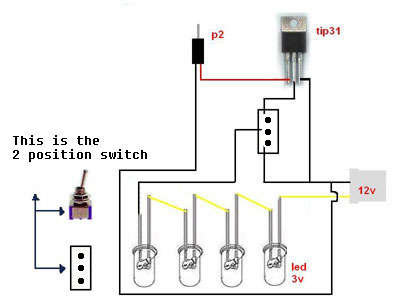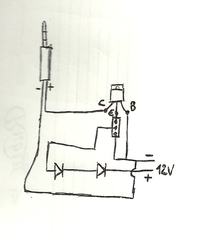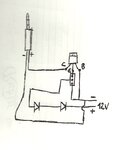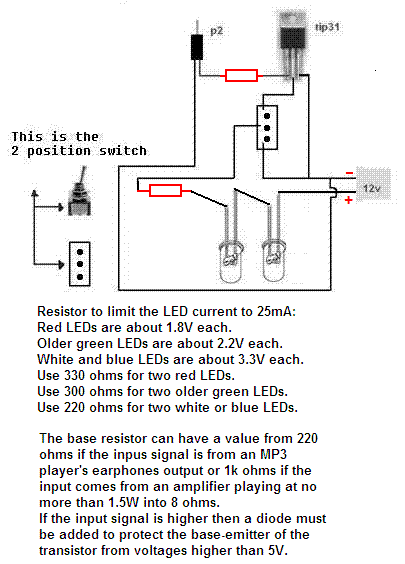TheMrWolf1994
Newbie level 6
I want to make this circuit if posible with one TIP31C transistor, sound banana and 2 LED's and i want when is music turned on LED's to blink, but when not music LED's to be still turned on (cause i made it to blink but when there isn't music LED's are turned off)..and tnx in advice
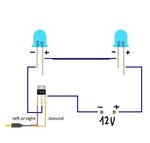
This is how I made it, but LED's turned off without music..

This is how I made it, but LED's turned off without music..
